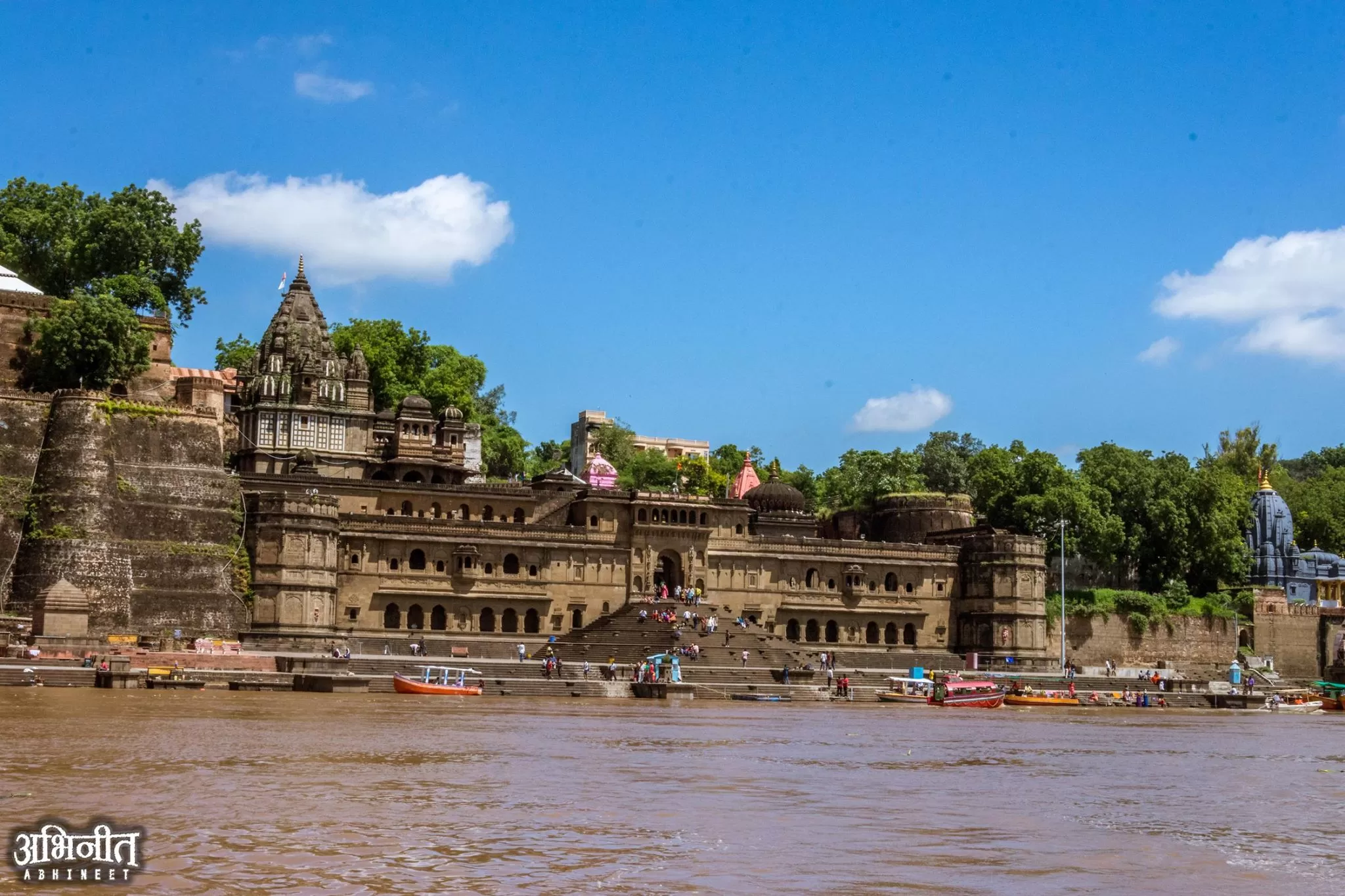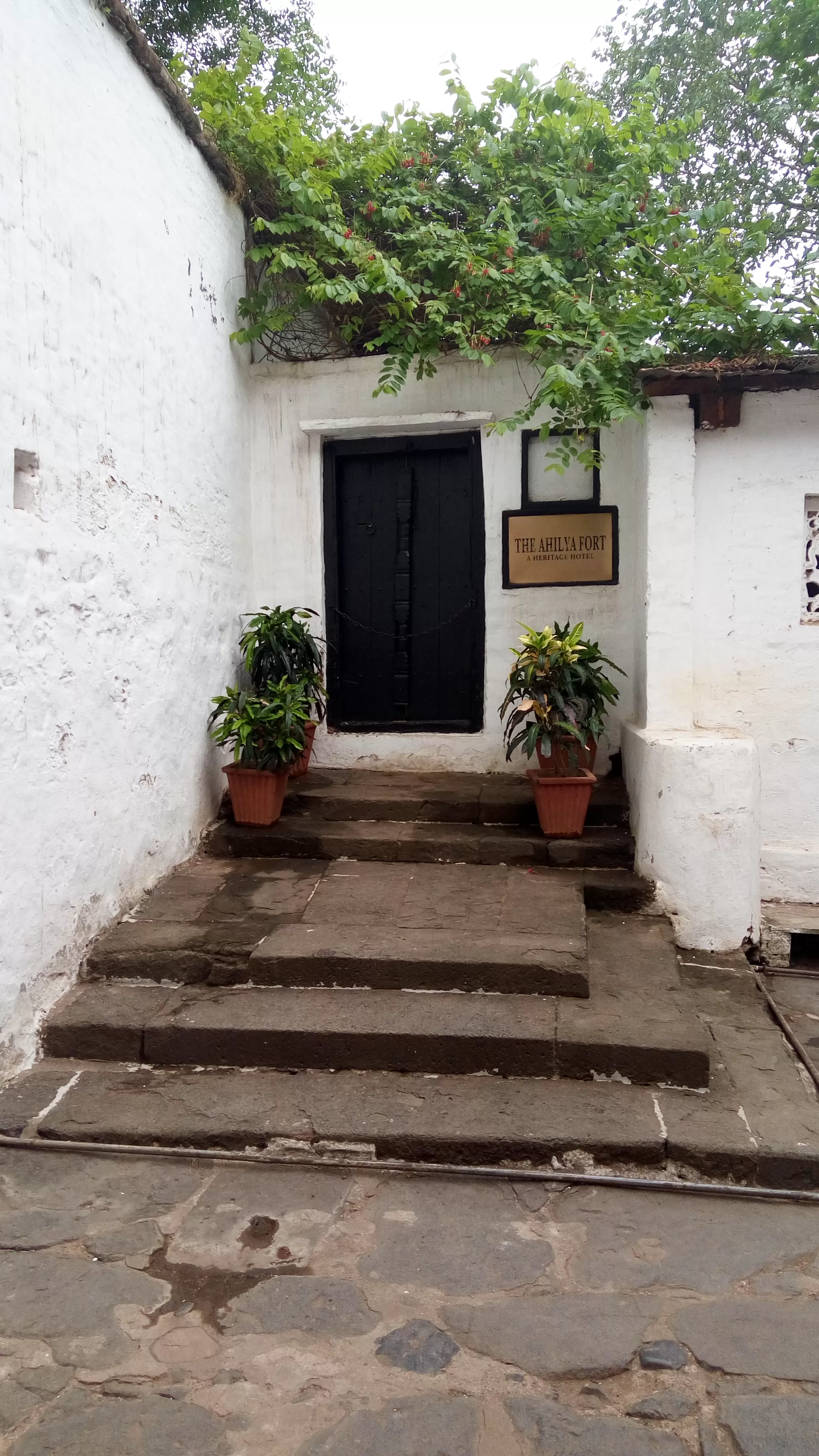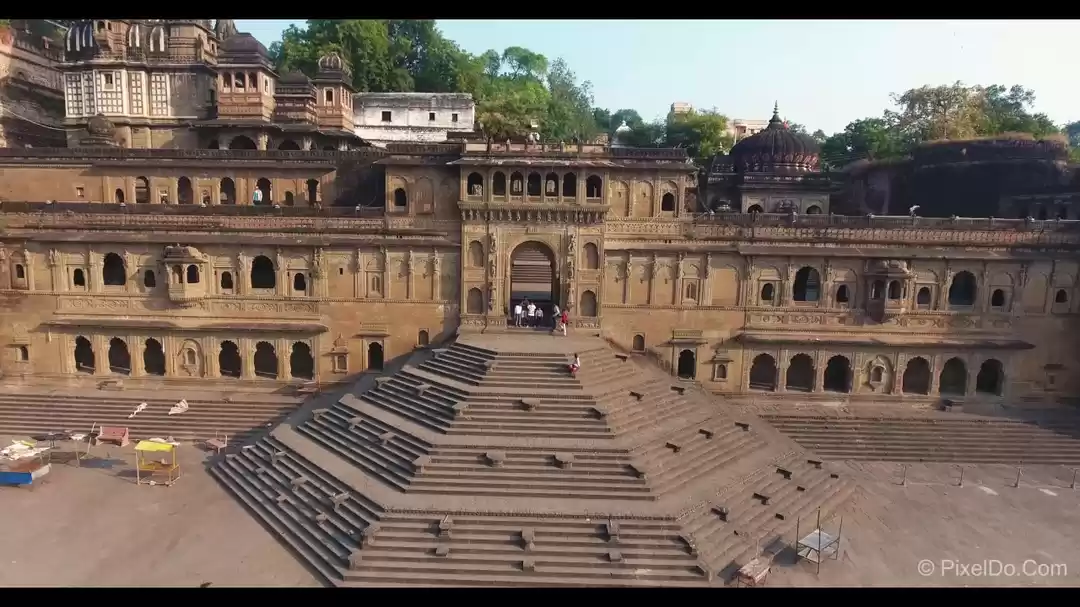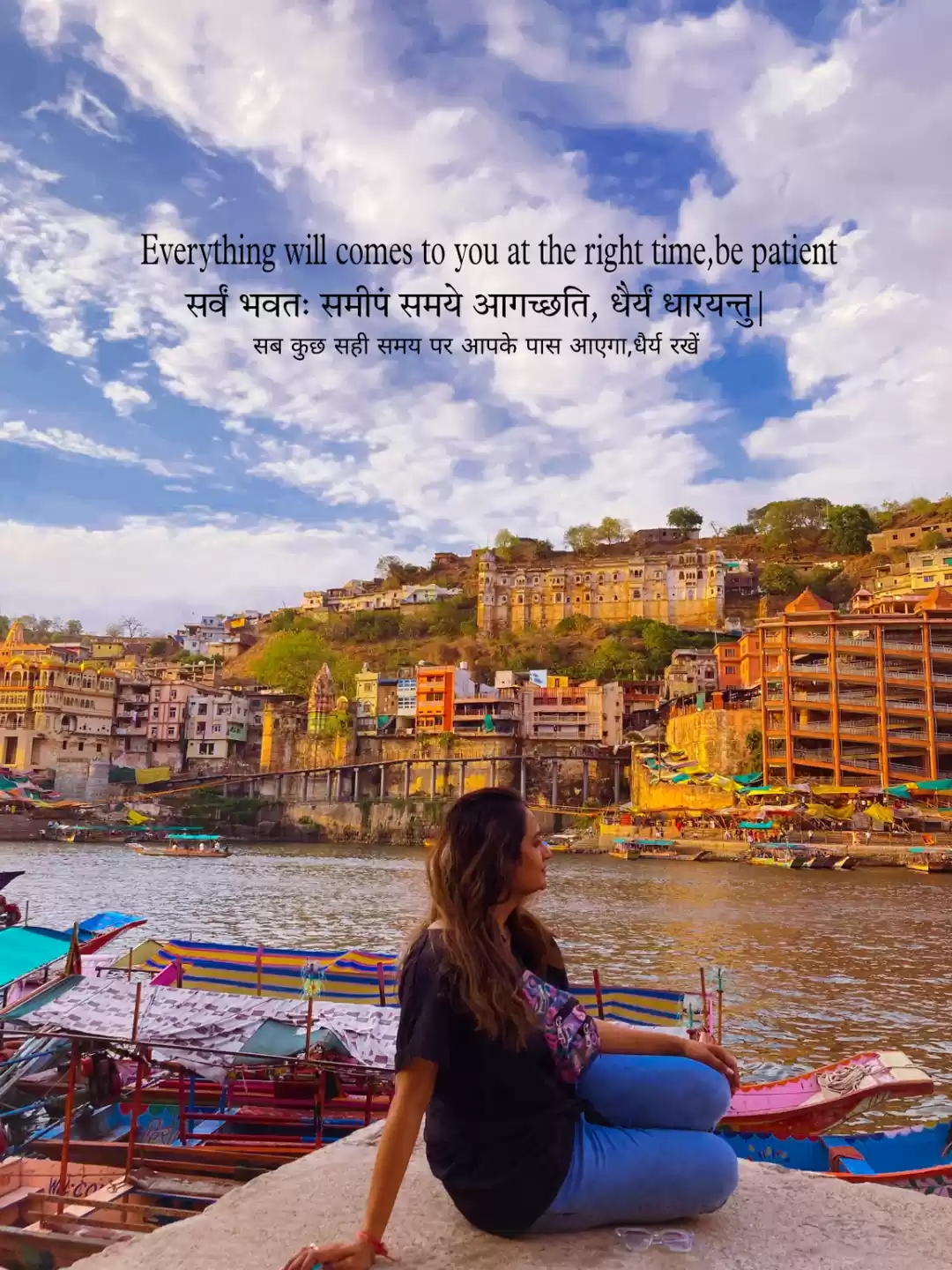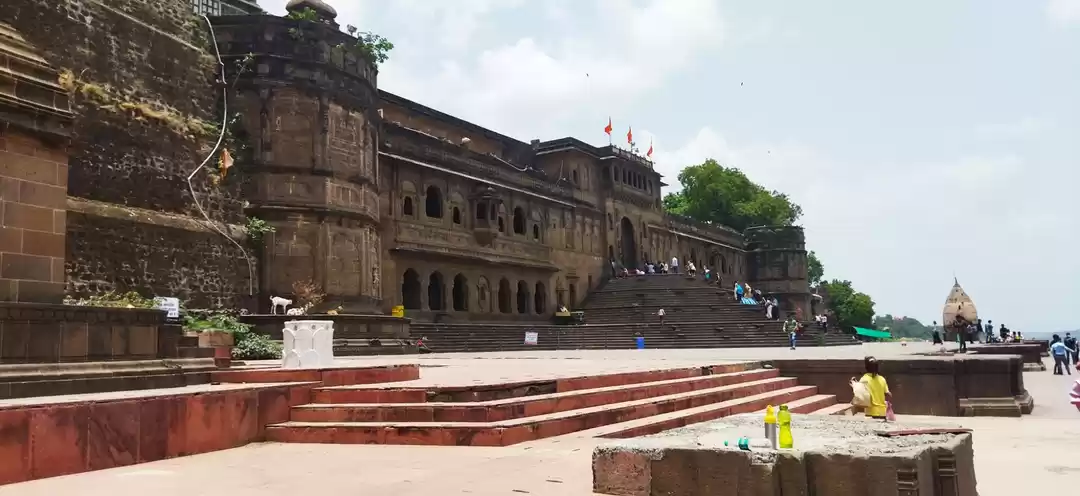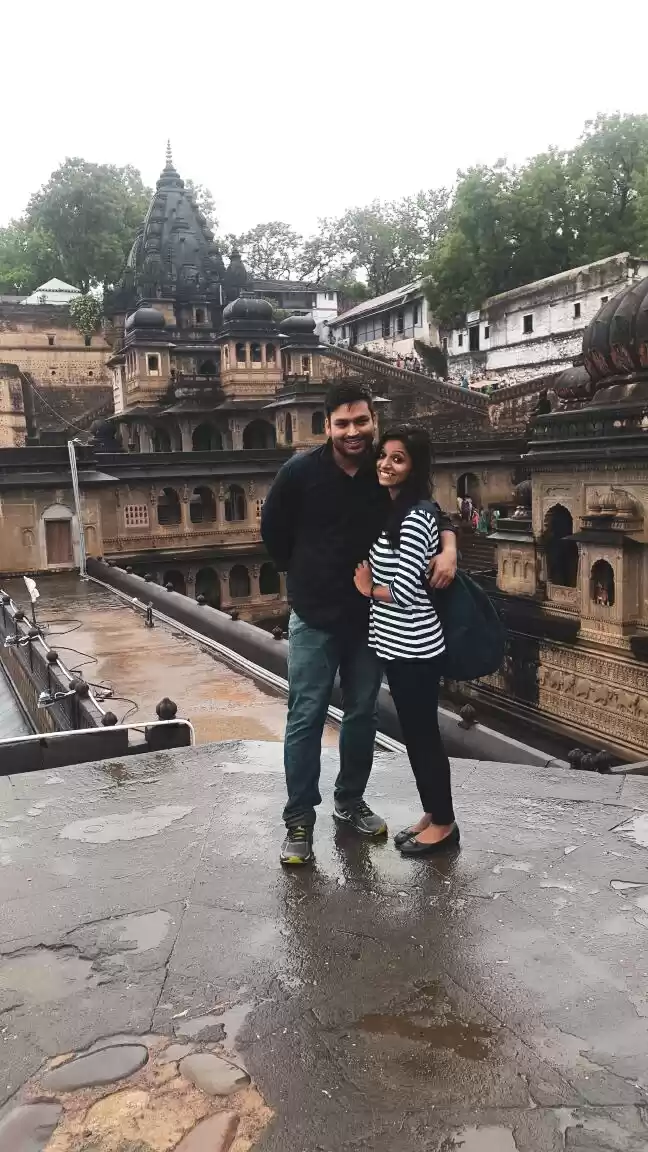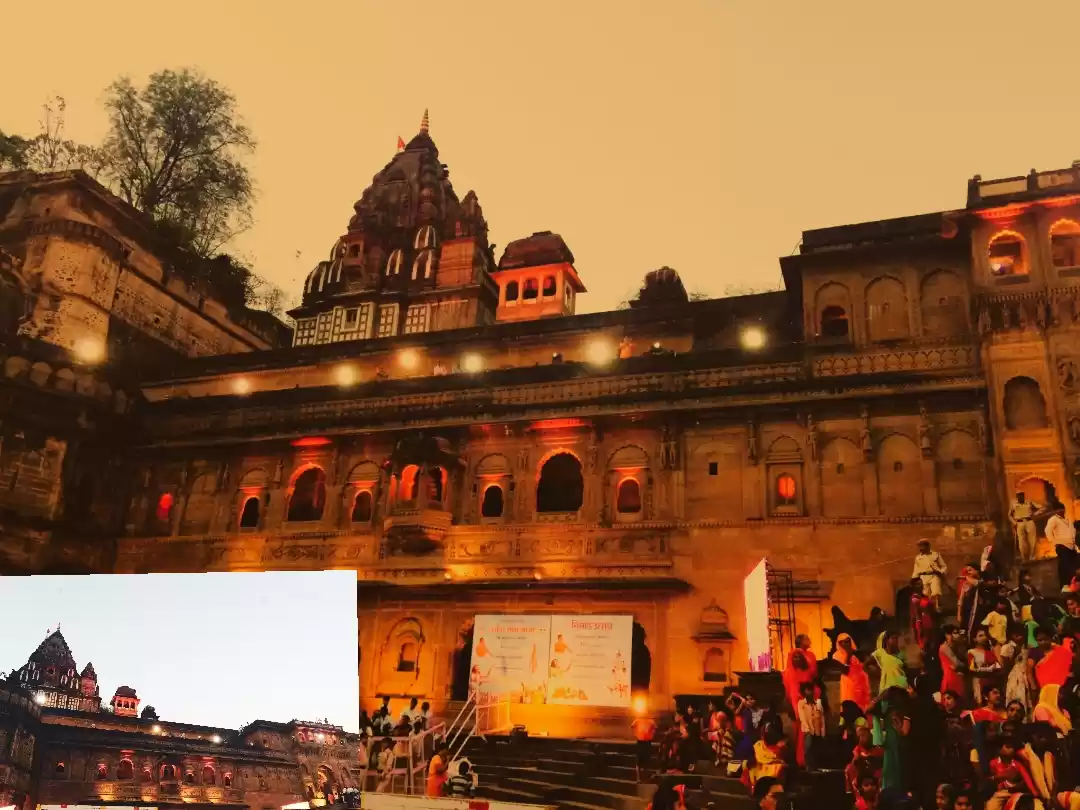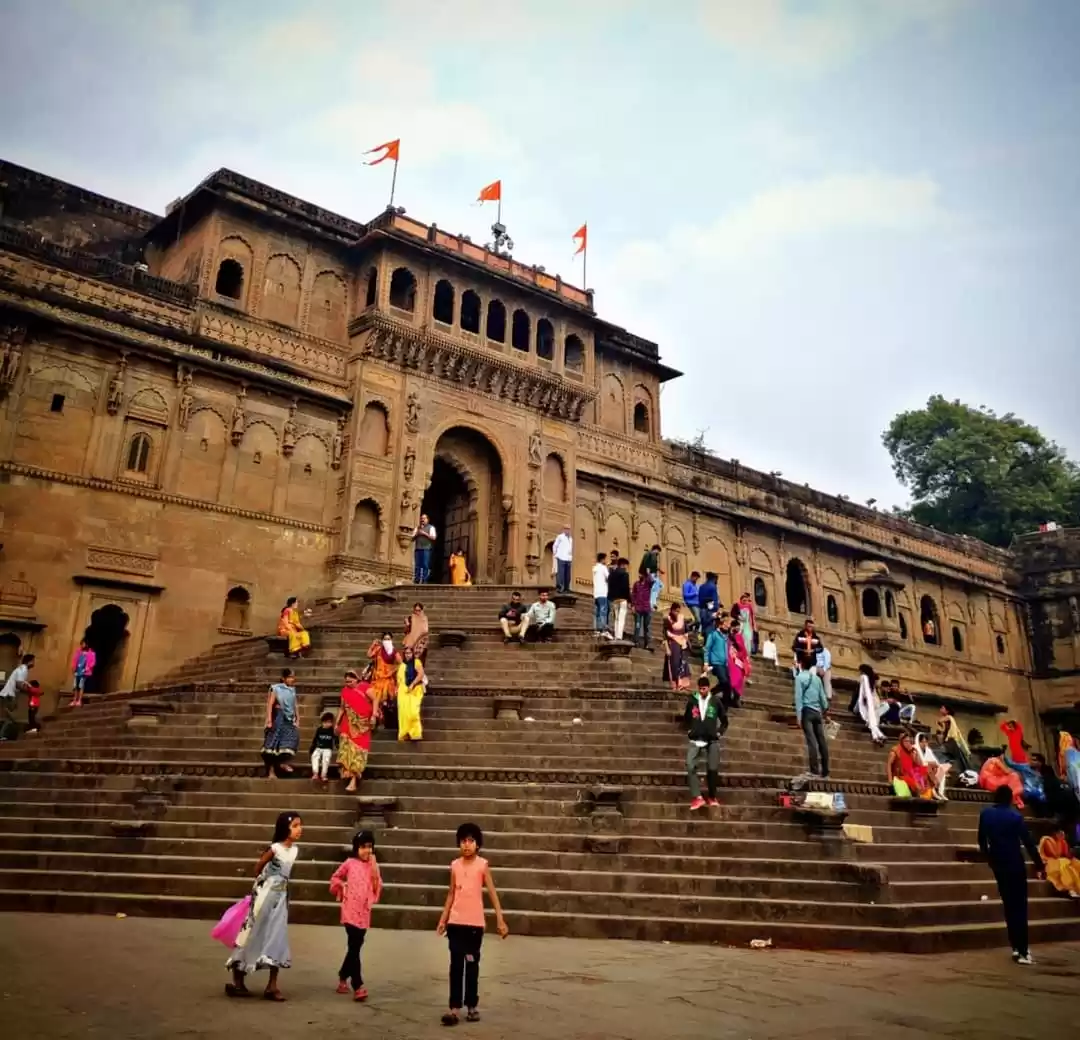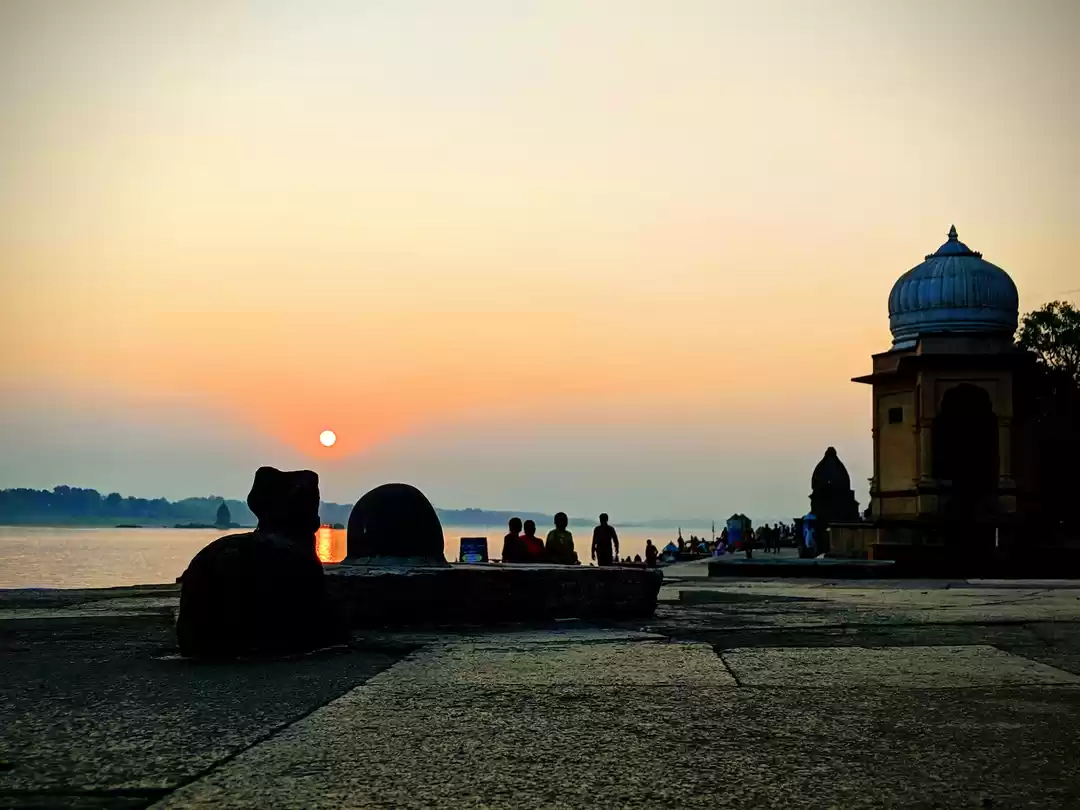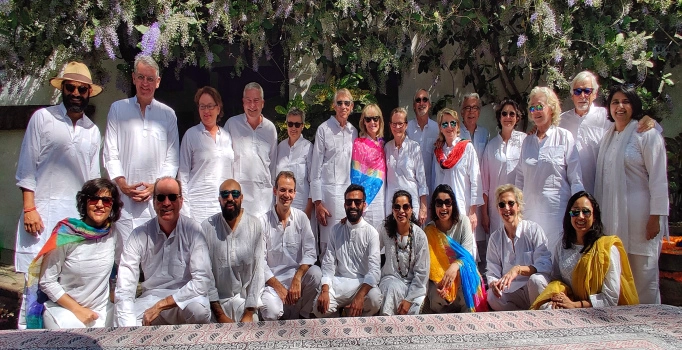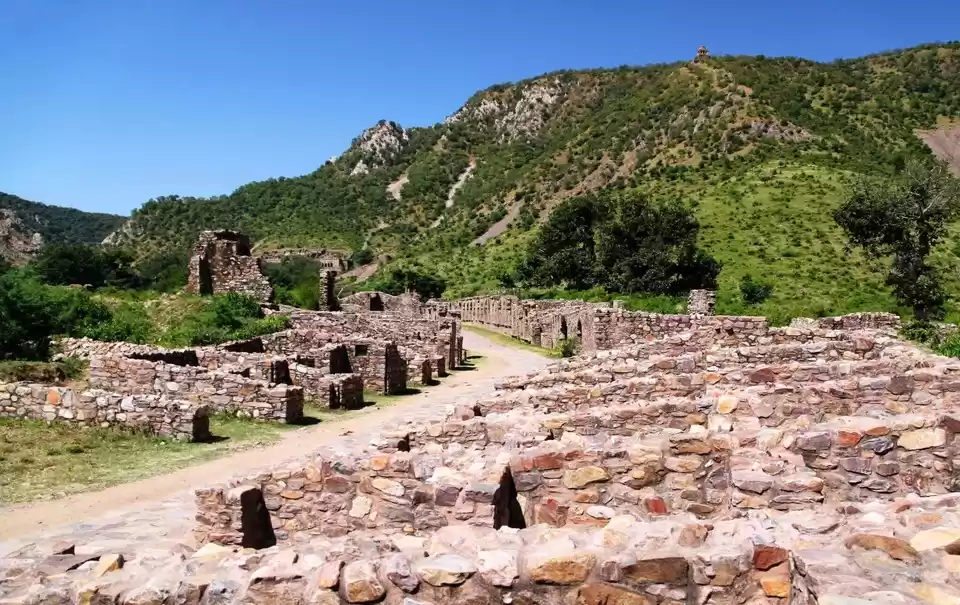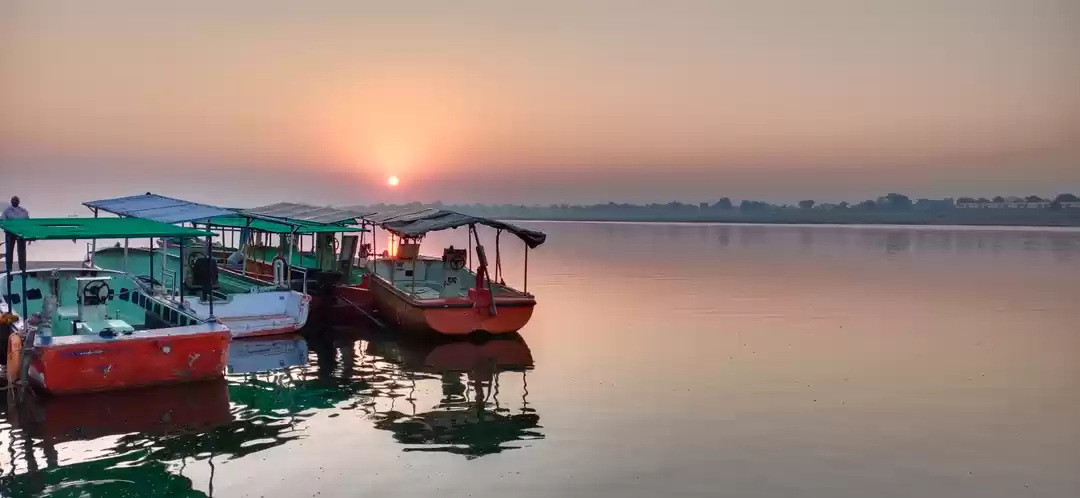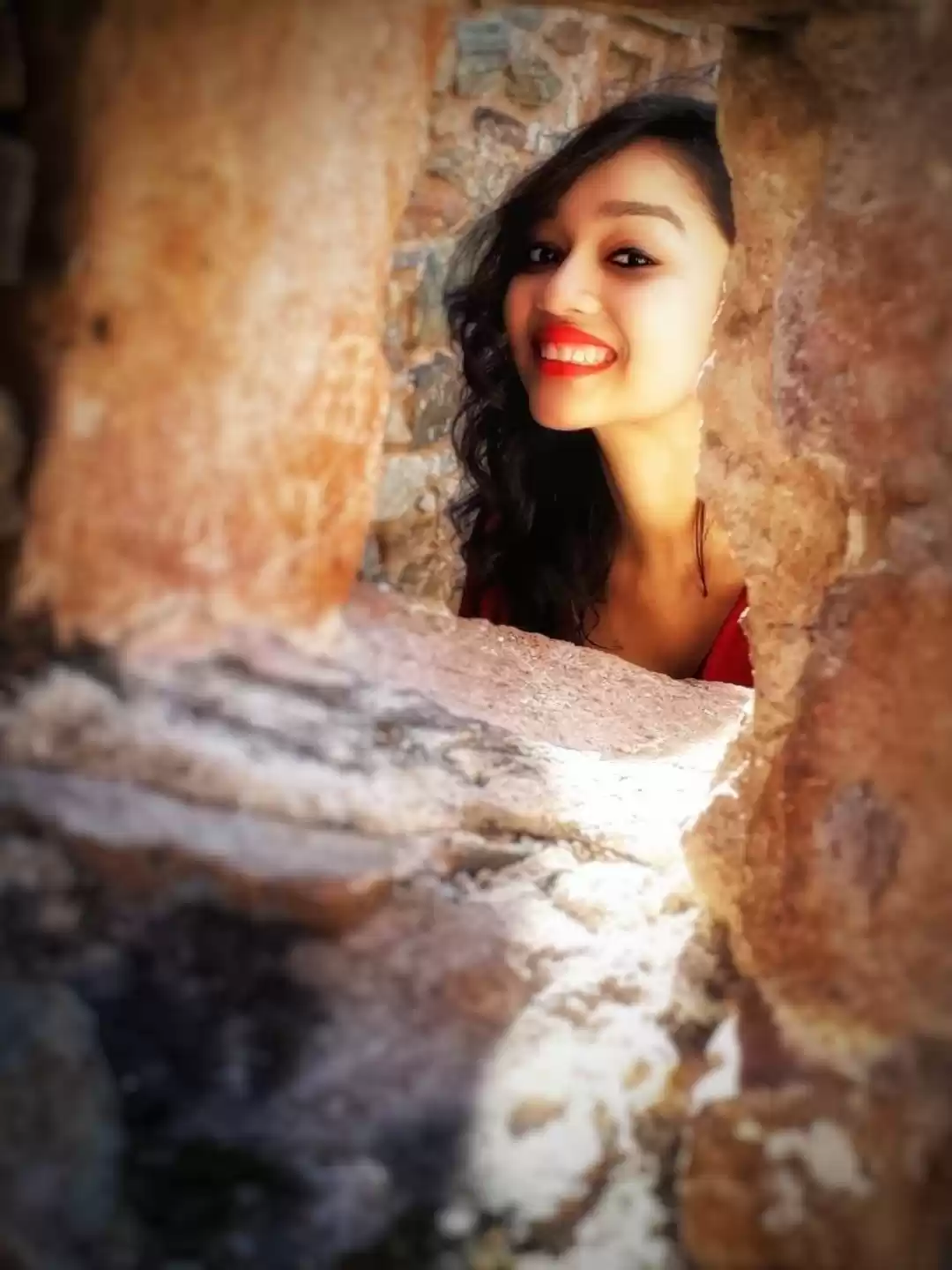Are you looking for a unique and memorable travel destination in India? Do you want to experience the rich and diverse culture and heritage of Madhya Pradesh? If yes, then you should definitely visit Ahilya Fort, a historical and cultural gem in Maheshwar.
Ahilya Fort is not just a fort, but a living legacy of one of the most remarkable and influential rulers in Indian history, Ahilya Bai Holkar. She was the queen of the Maratha empire, who ruled from the fort for over three decades, from 1767 to 1795. She was known for her benevolence, piety, and courage, and for building temples, ghats, forts, and public works across India.
Today, Ahilya Fort is a heritage hotel, run by Prince Richard Holkar, the descendant of Ahilya Bai Holkar, and the son of the last Maharaja of Indore. The hotel offers a unique and memorable experience to its guests, who can stay in the royal rooms, dine in the exquisite gardens, relax in the pool or massage room, and enjoy the activities and experiences that the hotel organizes, such as boating, picnics, puja, blessings, etc.
Ahilya Fort is also a perfect base to explore the town of Maheshwar, and the nearby attractions of Madhya Pradesh. Maheshwar is a sacred and spiritual place on the banks of the Narmada river, which is also known for its beautiful ghats, fort museum, Rehwa Society, and Maheshwari sarees. You can also visit the Mandu fort, the Omkareshwar temple, and other places of interest in the region.
In this article, we will tell you everything you need to know about Ahilya Fort, and why you should visit it.

The Legacy of Ahilya Bai Holkar: The Queen Who Built the Fort
Ahilya Bai Holkar was born in 1725, in a village near Pune. She was married to Khanderao Holkar, the son of Malhar Rao Holkar, the founder of the Holkar dynasty of the Maratha empire. She accompanied her husband and father-in-law in their military campaigns, and learned the art of administration and governance from them.
She became the queen of the Maratha empire, after the death of her husband and father-in-law, and with the support of the Peshwa, the prime minister of the Maratha empire. She moved her capital from Indore to Maheshwar, and built the Ahilya Fort on the banks of the Narmada river, as her seat of power.
She ruled from the fort for over three decades, from 1767 to 1795, and earned the respect and admiration of her subjects and allies, as well as her enemies. She was known for her benevolence, piety, and courage, and for building temples, ghats, forts, and public works across India, in places such as Varanasi, Dwarka, Somnath, Rameshwaram, Kashi, Gaya, Mathura, Ayodhya, Ujjain, Nashik, etc. She also promoted trade and commerce, supported arts and culture, and maintained peace and harmony among different communities and religions.
She was praised by her contemporaries and historians, as one of the greatest rulers and women in Indian history. Some of the anecdotes, quotes, or testimonials that illustrate her personality, values, and vision are:
She was called “the Philosopher Queen” by the British historian and politician, Edmund Burke, who admired her for her wisdom and justice.
She was called “the Mother of the Poor” by the people of Maheshwar, who loved her for her generosity and kindness.
She was called “the Devi Ahilya Bai” by the Hindu priests, who revered her for her devotion and piety.
She wrote in her royal seal, “Sri Srimant Rani Ahilya Bai Holkar, who is the servant of God and the protector of the people”.
She said in her letter to the Peshwa, “My only desire is to serve God and His creatures. I have no other ambition”.
The Architecture and Beauty of the Fort: A Blend of Tradition and Elegance
Ahilya Fort is a magnificent structure, that stands on a hill overlooking the Narmada river. The fort covers an area of about 3 acres, and has a rectangular shape, with walls, gates, towers, and bastions. The fort was built in the 18th century, by Ahilya Bai Holkar, and reflects the Maratha and Rajput influences, as well as the personal taste and preferences of the queen.
The main attractions and landmarks within the fort premises are:
- The chhatris, or the cenotaphs, of Ahilya Bai Holkar and her family members, such as her husband, son, daughter-in-law, and grandson. The chhatris are dome-shaped structures, with pillars, arches, and carvings, that are built on a platform, and surrounded by a railing. The chhatris are the symbols of the glory and honor of the Holkar dynasty, and are visited by pilgrims and tourists alike.
- The balconies, or the jharokhas, that are attached to the walls of the fort, and offer a panoramic view of the Narmada river, the ghats, and the town of Maheshwar. The balconies are decorated with colorful curtains, cushions, and carpets, and are the perfect places to relax and enjoy the scenery.
- The gardens, or the baghs, that are spread across the fort, and are filled with flowers, fruits, vegetables, and herbs. The gardens are the sources of fresh and organic produce, that are used for the dining and cooking at the hotel. The gardens are also the venues for the outdoor dining, where the guests can enjoy the delicious and authentic cuisine of Maheshwar and Madhya Pradesh, prepared by the hotel staff.
- The royal seat, or the rajgaddi, that is located in the main hall of the fort, and is the place where Ahilya Bai Holkar used to sit and hold her court, and attend to the affairs of the state. The royal seat is a wooden throne, with a canopy, and a portrait of the queen behind it. The royal seat is a reminder of the power and prestige of the queen, and is a revered and respected place in the fort.
- The fort also has several temples and shrines within its premises, such as the Ahilyeshwar temple, the Rajrajeshwar temple, the Baneshwar temple, and the Narmada temple, that are dedicated to various deities, such as Shiva, Vishnu, Ganesh, and Narmada. The temples are the places of worship and devotion, and are visited by the guests and the locals alike. The temples are also the places of art and culture, and display the exquisite and intricate sculptures and paintings of the Maratha and Rajput styles.
- The fort is a blend of tradition and elegance, and showcases the beauty and charm of the fort and its surroundings. The fort is a living museum, that preserves and celebrates the history and culture of Maheshwar and Madhya Pradesh.
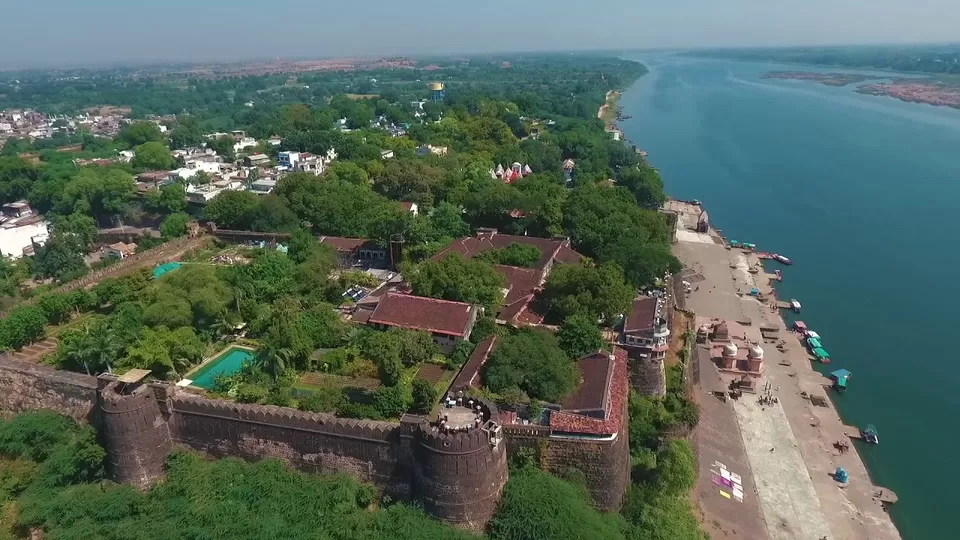
The Conversion of the Fort into a Heritage Hotel: A Unique and Memorable Experience
Ahilya Fort was transformed into a heritage hotel in 2000, by Prince Richard Holkar, the descendant of Ahilya Bai Holkar, and the son of the last Maharaja of Indore. Prince Richard Holkar is a passionate and visionary hotelier, who wanted to share the legacy and beauty of the fort with the world, and to provide a unique and memorable experience to his guests.
The hotel offers 13 rooms, that are named after the places where Ahilya Bai Holkar built her temples and public works, such as Varanasi, Dwarka, Somnath, Rameshwaram, etc. The rooms are spacious and comfortable, and are furnished with antique furniture, paintings, and artifacts, that belong to the Holkar family. The rooms also have modern amenities, such as air-conditioning, wi-fi, and en-suite bathrooms, that ensure the convenience and comfort of the guests.
The hotel also offers a range of facilities and services, such as:
Dining: The hotel provides a variety of dining options, such as indoor dining, outdoor dining, and private dining, where the guests can enjoy the delicious and authentic cuisine of Maheshwar and Madhya Pradesh, prepared by the hotel staff, using fresh and organic ingredients from the gardens. The hotel also caters to the dietary preferences and restrictions of the guests, such as vegetarian, vegan, gluten-free, etc. The hotel also serves a complimentary breakfast, and a high tea, every day, to the guests.
Pool: The hotel has a beautiful and serene pool, that is located in the lower garden of the fort, and is surrounded by trees and flowers. The pool is the ideal place to relax and unwind, and to enjoy the view of the Narmada river and the town of Maheshwar. The pool also has a changing room, a shower, and a toilet, for the convenience of the guests.
Massage: The hotel has a massage room, that is located in the upper garden of the fort, and is decorated with candles, flowers, and incense. The massage room offers a range of massages, such as Ayurvedic, Swedish, Thai, etc., that are performed by trained and professional therapists, who use natural and organic oils and products. The massage room also has a steam room, a sauna, and a jacuzzi, that are available for the guests to use.
Yoga: The hotel has a yoga room, that is located in the lower garden of the fort, and is equipped with mats, cushions, and props. The yoga room offers daily yoga classes, that are led by qualified and experienced instructors, who teach various styles and levels of yoga, such as Hatha, Vinyasa, Ashtanga, etc. The yoga room also offers meditation and pranayama sessions, that help the guests to relax and rejuvenate their mind, body, and spirit.
Library: The hotel has a library, that is located in the main hall of the fort, and is stocked with books, magazines, newspapers, and DVDs, that cover a wide range of topics and genres, such as history, culture, art, literature, travel, etc. The library also has a computer, a printer, and a scanner, that are available for the guests to use. The library is a cozy and quiet place, where the guests can read, write, work, or watch a movie.
The hotel also organizes a variety of activities and experiences for its guests, such as:
Boating: The hotel arranges for a boat ride on the Narmada river, where the guests can enjoy the scenic and serene beauty of the river, and the ghats. The boat ride also includes a visit to the Baneshwar temple, which is a small island temple in the middle of the river, and a popular pilgrimage site. The boat ride also offers a chance to witness the evening aarti, or the ritual of offering prayers and lamps to the river, which is a spectacular and spiritual sight.
Picnics: The hotel arranges for a picnic on the banks of the Narmada river, or in the nearby countryside, where the guests can enjoy a delicious and wholesome meal, prepared by the hotel staff, using fresh and local ingredients. The picnic also includes a visit to the Rehwa Society, which is a non-profit organization that supports the women weavers of Maheshwar, and produces the famous Maheshwari sarees, which are hand-woven silk and cotton fabrics, with distinctive designs and colors. The guests can also buy the sarees, or learn how to weave them, from the weavers themselves.
Puja: The hotel arranges for a puja, or a ritual of worship, at the Ahilyeshwar temple, which is the main temple within the fort premises, and is dedicated to Lord Shiva. The puja is performed by the priests of the temple, who chant the mantras, and offer the flowers, fruits, and sweets, to the deity. The guests can also participate in the puja, and receive the blessings and prasad, or the sacred food, from the priests. The puja is a way of expressing gratitude and devotion to the divine, and to the queen, who built the temple.
Blessings: The hotel arranges for a blessing, or a ceremony of bestowing good wishes and happiness, at the royal seat, or the rajgaddi, which is the place where Ahilya Bai Holkar used to sit and rule. The blessing is performed by the hotel staff, who dress up in the traditional attire of the Holkar dynasty, and greet the guests with garlands, tilak, and aarti. The guests can also sit on the royal seat, and feel the power and prestige of the queen, and her descendants.
Ahilya Fort is a heritage hotel, that offers a unique and memorable experience to its guests, who can stay in the royal rooms, dine in the exquisite gardens, relax in the pool or massage room, and enjoy the activities and experiences that the hotel organizes. The hotel is a living legacy of Ahilya Bai Holkar, and her family, and is a place of history, culture, and hospitality.
The Attractions and Places to Visit Near the Fort: A Rich and Diverse Destination
Ahilya Fort is also a perfect base to explore the town of Maheshwar, and the nearby attractions of Madhya Pradesh. Maheshwar is a sacred and spiritual place on the banks of the Narmada river, which is also known for its beautiful ghats, fort museum, Rehwa Society, and Maheshwari sarees. You can also visit the Mandu fort, the Omkareshwar temple, and other places of interest in the region.
Some of the main attractions and places to visit in and around Maheshwar are:
- The ghats, or the steps, that lead to the Narmada river, and are lined with temples, shrines, and shops. The ghats are the places of worship and bathing, and are visited by the pilgrims and tourists alike. The ghats are also the places of art and culture, and host various festivals and events, such as the Narmada Jayanti, the Kumbh Mela, the Mahashivaratri, etc. The ghats are also the places of beauty and serenity, and offer a stunning view of the river, and the sunrise and sunset.
- The fort museum, or the Rajwada, which is located within the Ahilya Fort premises, and is open to the public. The fort museum displays the artifacts, weapons, paintings, photographs, and documents, that belong to the Holkar family, and depict the history and culture of Maheshwar and Madhya Pradesh. The fort museum also has a souvenir shop, where the guests can buy the handicrafts, jewelry, and books, that are related to the fort and the town.
- The Rehwa Society, which is a non-profit organization that supports the women weavers of Maheshwar, and produces the famous Maheshwari sarees, which are hand-woven silk and cotton fabrics, with distinctive designs and colors. The Rehwa Society also runs a school, a health center, and a community center, for the welfare and empowerment of the weavers and their families. The guests can visit the Rehwa Society, and buy the sarees, or learn how to weave them, from the weavers themselves.
- The Maheshwari sarees, which are the traditional and exquisite fabrics of Maheshwar, and are known for their fine quality, texture, and patterns. The Maheshwari sarees are made of silk and cotton, and are dyed with natural and vegetable colors, such as indigo, turmeric, pomegranate, etc. The Maheshwari sarees have various motifs and designs, such as flowers, leaves, animals, geometrical shapes, etc., that are inspired by the fort, the temples, and the Narmada river. The Maheshwari sarees are worn by the women of Maheshwar, and are also popular among the tourists and celebrities, who buy them as souvenirs or gifts.
- The Mandu fort, which is a hilltop fort, located about 60 km from Maheshwar, and is one of the largest and best-preserved forts in India. The Mandu fort was built in the 10th century, and was the capital of the Parmar and the Mughal dynasties, who ruled over the region. The Mandu fort has several monuments and structures, such as palaces, mosques, tombs, gardens, and tanks, that showcase the architectural and artistic excellence of the medieval period. The Mandu fort also offers a splendid view of the surrounding valleys and plains, and is a popular destination for history and nature lovers.
- The Omkareshwar temple, which is a Hindu temple, located about 65 km from Maheshwar, and is dedicated to Lord Shiva. The Omkareshwar temple is one of the 12 Jyotirlingas, or the self-manifested shrines of Lord Shiva, and is considered one of the most sacred and powerful places of worship in India. The Omkareshwar temple is situated on an island, shaped like the sacred symbol of Om, in the Narmada river, and is connected by a bridge to the mainland. The Omkareshwar temple is visited by millions of devotees and tourists, who come to seek the blessings and grace of Lord Shiva.
These are some of the attractions and places to visit near Ahilya Fort, that make it a rich and diverse destination. You can also visit other places of interest in the region, such as the Indore city, the Ujjain city, the Mahakaleshwar temple, the Sanchi stupa, the Bhimbetka caves, etc.
Conclusion
Ahilya Fort is a historical and cultural gem in Maheshwar, that offers a unique and memorable experience to its guests, who can stay in the royal rooms, dine in the exquisite gardens, relax in the pool or massage room, and enjoy the activities and experiences that the hotel organizes. The hotel is a living legacy of Ahilya Bai Holkar, and her family, and is a place of history, culture, and hospitality.
Ahilya Fort is also a perfect base to explore the town of Maheshwar and the nearby attractions of Madhya Pradesh. Maheshwar is a sacred and spiritual place on the banks of the Narmada river, which is also known for its beautiful ghats, fort museum, Rehwa Society, and Maheshwari sarees.
You can also visit the Mandu fort, the Omkareshwar temple, and other places of interest in the region.

